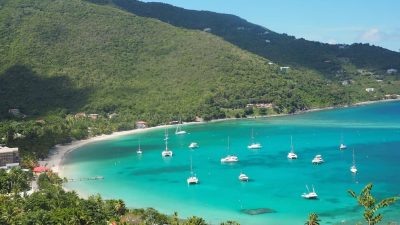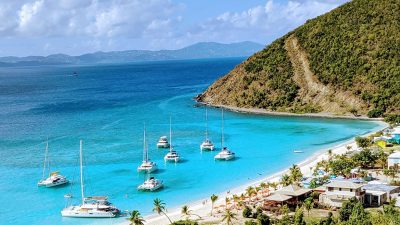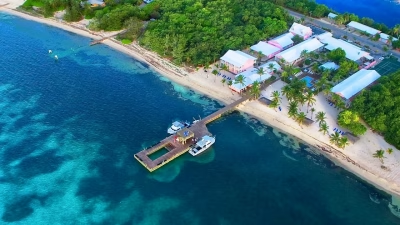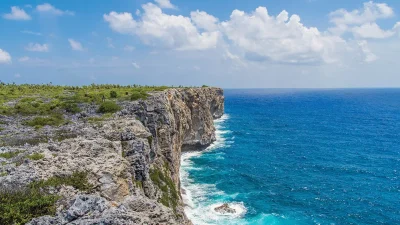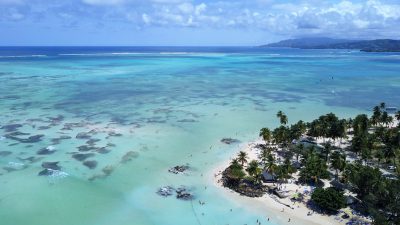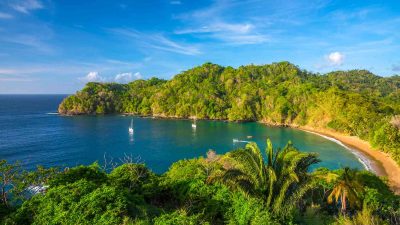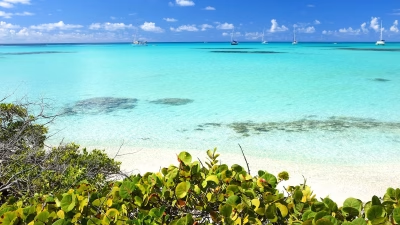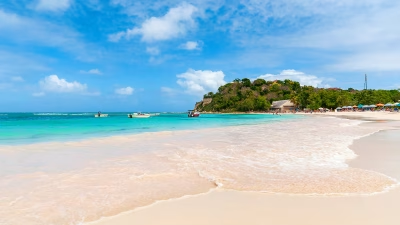Snorkeling Maho Bay with kids, located on the northern shore of St. John in the U.S. Virgin Islands, is a top choice for families visiting the island. With soft white sand, shallow water, and calm conditions, it’s a favorite for both local families and visitors traveling with young children. Parents looking for an easy, safe, and scenic beach day will find Maho Bay checks all the boxes.
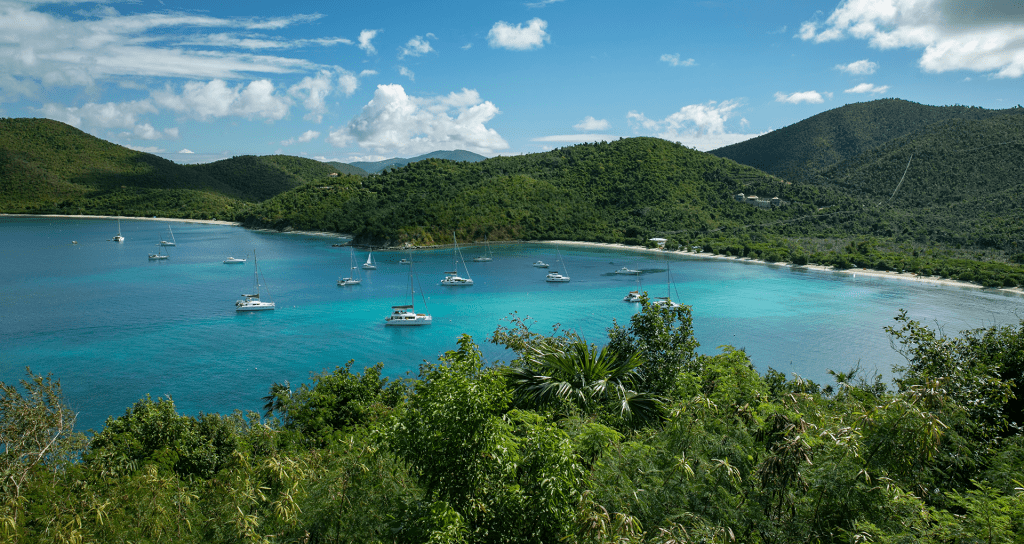
Getting to Maho Bay Beach
From Cruz Bay, drive approximately 5 miles along Route 20 (North Shore Road). The road is paved and well-maintained. There is a small parking lot directly next to the beach and a larger lot located at the eastern end. Families should aim to arrive early, especially during peak season or holidays, as parking fills up quickly.
At the western end of the beach, visitors will find restrooms, a picnic pavilion with tables, and grills. These facilities make it easy for families to spend a full day at the beach without needing to leave for meals or bathroom breaks.
Why Families Love Snorkeling Maho Bay with Kids
Maho Bay is often voted a “Visitor Favorite,” and it’s easy to see why—especially for parents. The beach is flat, with a sandy bottom that extends about 20 yards into the water. The calm, shallow entry makes it ideal for small children who want to wade, float, or build sandcastles near the shore.
There’s a mix of sun and shade thanks to the coconut palms lining the beach. Families can bring their own shade tents or settle under the trees for a break from the sun. The light surf and gentle slope of the shoreline allow for safe swimming, even for beginner swimmers.
Do note that because of its popularity, the beach can get crowded during peak times. For a quieter experience, families can visit earlier in the morning or later in the afternoon.
Video of Snorkeling at Maho Bay
Tips for Snorkeling Maho Bay with Kids
Maho Bay offers one of the best snorkeling experiences on St. John for kids and beginners. The water remains shallow for a good distance, and the visibility is generally good. Parents can guide children while they explore marine life close to shore.
Just off the beach, snorkelers often spot sea turtles and stingrays grazing in the seagrass beds. Other common sightings include pelicans, young tarpon, and schools of small bait fish. It’s not uncommon to see several sea turtles in the area on a single swim.
Families interested in more colorful marine life and coral should explore along the eastern or western shorelines:
Eastern Shoreline
Snorkeling the eastern edge of the bay leads to the point that separates Maho Bay from Little Maho. This route stays in shallow water, ranging from 3 to 10 feet deep. It’s home to rock outcroppings and coral formations like gorgonians, purple sea fans, and sponges. Kids may spot fish such as wrasse, tangs, and angelfish here.
Western Shoreline
Snorkeling west from the beach toward Cinnamon Bay leads through slightly deeper water—up to 12 feet—but remains manageable for kids with some snorkeling experience. The further out you go, the more diverse the coral and fish populations become. Expect to see Atlantic Blue Tangs, Beau Gregory damselfish, juvenile angelfish, and a mix of soft and hard corals.
This area is also known for occasional nurse shark sightings. These sharks are slow-moving and not dangerous to humans, but families should avoid touching or disturbing any sea life. Many marine species, including corals, have natural defenses like stingers.
Snorkel Conditions
- Visibility: Water clarity is usually excellent in the morning when winds are light. Mornings also tend to have fewer crowds, which is ideal for families.
- Currents: Very mild. Maho Bay is in a protected bay with little wave action, making it especially suitable for beginners and young children.
- Depth: Close to shore, the depth ranges from 2 to 5 feet—perfect for young snorkelers. As you move farther along the rocky points, it can reach 10 to 12 feet, but remains shallow enough for older kids to feel comfortable with supervision.
Where to Snorkel with Kids
- Turtle and Ray Zone: The best spot to see sea turtles and southern stingrays is in the seagrass beds just 10–30 feet from shore, right in front of the main beach area. These animals are often grazing in water shallow enough for children to stand or float with a snorkel.
- Left (Eastern) Point: Great for colorful fish and coral. Keep kids close to shore and away from the rocks, but follow the eastern curve if they’re confident swimmers.
- Right (Western) Point: Ideal for older kids or confident swimmers. More variety of coral and deeper water, but still accessible.
What Families Might See
- Sea turtles (usually green turtles, occasionally hawksbill)
- Southern stingrays gliding in the shallows
- Schooling fish such as Atlantic Blue Tangs and juvenile wrasse
- Colorful corals like brain coral, fire coral (do not touch!), gorgonians, and sea fans
- Pelicans and seabirds diving for fish along the shoreline
- Occasional nurse shark—harmless and calm, often resting on the bottom
Gear Tips for Families
- Bring snorkel vests or flotation belts for younger kids and beginner swimmers. These help them stay buoyant and relaxed.
- Full-face snorkel masks can be easier for some children but make sure they fit properly and are used safely.
- Consider wearing water shoes or reef-safe swim fins, especially if venturing near rocks.
- Pack a small waterproof camera or GoPro with a float attachment so kids can capture their underwater adventure.
Safety Reminders
- Always keep eyes on children in the water, even in shallow areas.
- Remind kids not to touch coral or marine animals. Coral is fragile and some sea life, like fire coral or sea urchins, can sting.
- Use reef-safe sunscreen to protect both your child’s skin and the marine ecosystem.
Facilities and What to Bring
- Bathrooms: Available at the west end of the beach
- Picnic Area: Covered pavilion with tables and grills
- Parking: Limited; arrive early
- Shade: Coconut palms offer natural shade
- Food: No food vendors directly on-site—bring your own snacks and water
Families should bring their own snorkel gear, sunscreen, towels, and sand toys. Reef-safe sunscreen is highly recommended to protect the marine environment.
Summary for Families Snorkeling Maho Bay with Kids
Maho Bay Beach is one of the easiest and safest beaches for families visiting St. John. The calm water, soft sand, and easy access make it an ideal stop for kids of all ages. Parents can enjoy a relaxed beach day while introducing kids to snorkeling and local wildlife in a low-stress environment.
Whether you’re looking to spot a sea turtle, wade in shallow waters, or enjoy a shaded picnic, Maho Bay delivers one of the best family beach experiences in the Virgin Islands.

